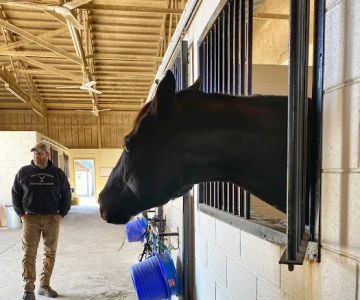What Must a Veterinary Clinic's Voicemail Recording Include?
When you call a veterinary clinic and reach their voicemail, it can be frustrating not knowing what to expect or how to proceed. A well-constructed voicemail message is crucial for pet owners to know their options and understand what to do in urgent situations. In this article, we’ll delve into the essential components a veterinary clinic's voicemail recording must include to ensure pet owners receive the necessary information and assistance. By following these guidelines, veterinary clinics can maintain clear communication with their clients, especially when the clinic is unavailable.
1. Clear Introduction and Business Hours
The first thing that any voicemail should communicate is a clear introduction. This sets the tone for the message and lets callers know they’ve reached the right place. The introduction should include the name of the veterinary clinic and a brief, friendly greeting. Here's an example:
“Thank you for calling [Clinic Name], where your pet’s health is our priority. We are currently unavailable, but please listen to the following options.”
Additionally, the voicemail should state the clinic’s regular business hours. This helps callers understand when they can expect to speak to someone directly or visit the clinic in person. If the clinic operates on special hours or has irregular scheduling, this information should be included as well.
- Example: “Our office hours are Monday through Friday, 9 AM to 5 PM. We are closed on weekends and public holidays.”
- Alternative Hours: “We are currently closed for the holiday. Please call back on [date].”
2. Options for Urgent Care or Emergency Situations
One of the most important things a veterinary clinic's voicemail should address is what to do in case of an emergency. Pet owners often call a veterinary clinic when their pet is sick or injured, and a clear emergency protocol should be in place. The voicemail should provide specific instructions on what to do if the situation is urgent.
- Example: “If this is an emergency, please press 1 to be directed to our 24-hour emergency service.”
- Important Contact Information: If the clinic doesn’t offer after-hours emergency care, the voicemail should list nearby emergency veterinary clinics or a pet hotline.
- Example: “For emergencies, please contact [Emergency Clinic Name] at [Phone Number], located at [Address].”
3. Clear Instructions for Non-Emergency Inquiries
For non-emergency inquiries, the voicemail should provide clear options so callers know how to proceed. This might include instructions for making appointments, requesting prescription refills, or asking general questions. The goal is to ensure the caller understands their next step based on the nature of their request.
- Example: “If you would like to schedule an appointment or speak to a technician, please press 2.”
- Example: “For prescription refills, please press 3, and leave your pet’s name and the medication details.”
- Example: “For general inquiries or to leave a message for our front desk, please press 4.”
4. Pet Health and Safety Information
Many veterinary clinics use their voicemail recording as an opportunity to provide helpful information about keeping pets healthy. This might include seasonal advice, pet care reminders, or guidance on preventing common health issues. Providing this information helps pet owners stay proactive about their pets' well-being and demonstrates the clinic's commitment to education.
- Example: “Did you know that flea and tick prevention is important year-round? Ask about our preventive care packages during your next visit!”
- Seasonal Reminders: “With summer approaching, make sure your pet stays hydrated and cool. Don’t forget to schedule your pet’s annual check-up.”
5. Message Option and Follow-Up Details
The voicemail should always include an option for callers to leave a message, as some people may need to get in touch with a specific veterinarian or staff member. The voicemail should guide the caller on what information to leave to ensure their issue is addressed effectively. Additionally, the message should inform callers about the expected timeline for follow-up.
- Example: “Please leave your name, phone number, and a brief message, and a member of our team will return your call as soon as possible.”
- Follow-Up Time: “We typically respond to messages within 24 hours. For urgent matters, please reach out to our emergency service.”
6. Friendly and Professional Tone
One of the most important elements of any veterinary clinic's voicemail is the tone of the message. The voicemail should be welcoming, professional, and compassionate. Pet owners are often stressed when they call a veterinary clinic, especially if their pet is sick or injured, so it's important that the voicemail gives them confidence that their concerns will be addressed with care and empathy.
- Example: “Thank you for your patience. We understand how important your pet’s health is, and we’re here to help!”
- Calming Messages: “Please know that we are doing everything we can to provide the best care for your pet.”
A well-crafted voicemail message serves as an essential tool for veterinary clinics to manage patient inquiries and provide timely assistance. Whether it’s offering clear instructions for urgent care or guiding pet owners on how to schedule routine appointments, a thoughtful voicemail recording can enhance the client experience and ensure that pet owners receive the support they need when they need it the most.
If you're looking for expert veterinary care for your pets, visit [Hidden Brook Veterinary] for professional and compassionate services tailored to your pet’s needs.










